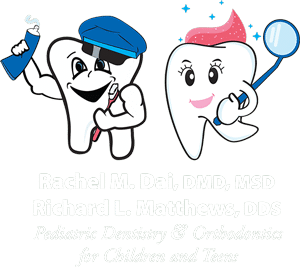Some Known Facts About Legacy Orthodontics.
Some Known Facts About Legacy Orthodontics.
Blog Article
Not known Details About Legacy Orthodontics
Table of ContentsLegacy Orthodontics Fundamentals ExplainedSome Ideas on Legacy Orthodontics You Need To KnowThe Best Guide To Legacy OrthodonticsHow Legacy Orthodontics can Save You Time, Stress, and Money.Some Known Factual Statements About Legacy Orthodontics
At Advanced Orthodontics, we supply clients with a all natural treatment experience. Additionally, we use adjustable treatment schedules, flexible repayment choices and an enjoyable, delightful experience. braces. Telephone call ( 480) 357-4900 today for more details and schedule a visit.An orthodontist is a dental practitioner educated to diagnose, protect against, and deal with teeth and jaw abnormalities. Orthodontists work with individuals of all ages, from children to grownups.
Malocclusion, or misaligned teeth, can bring about dental issues, including dental cavity, gum illness, and challenging or unpleasant chewing. But not every person is birthed with straight teeth. If you have a negative bite or big areas in between your teeth, you may intend to consult a dental practitioner concentrating on orthodontic treatment.
The Definitive Guide to Legacy Orthodontics
( Picture Credit Score: DigitalVision/Getty Images) Orthodontists make use of dealt with and removable oral devices, like dental braces, retainers, and bands, to alter the position of teeth in your mouth. Orthodontic treatment is for oral problems, including: Crooked teethBite issues, like an overbite or an underbiteCrowded teeth or teeth that are as well much apartJaw misalignmentThe goal of orthodontic treatment is to improve your bite.
A healthy and balanced bite ensures you can eat, eat, and talk appropriately. While you might think about orthodontists as generally for kids or teenagers who require braces, they can correct dental issues at any kind of age. Orthodontists go to university, oral school, and orthodontic college. After college graduation, they spend 2 or 3 years in an orthodontic residency program.
, yet not all dental experts are orthodontists. They concentrate on 2 locations: How to effectively and securely relocate teeth Just how to properly assist advancement in the teeth, jaw, and faceOnce an orthodontist has actually finished training, they have the option to end up being board certified.
The Best Strategy To Use For Legacy Orthodontics
Imbalance, or malocclusion, is one of the most common reason individuals see an orthodontist. It is hereditary and is the result of dimension differences in between the top and lower jaw or between the jaw and teeth. Malocclusion leads to tooth overcrowding, a misshapen jaw, or uneven bite patterns. Malocclusion is generally treated with: Your orthodontist affixes metal, ceramic, or plastic square bonds to your teeth.
If you have just small malocclusion, you might have the ability to use clear braces, called aligners, rather of traditional braces (https://slides.com/legacyortho). Some individuals need a headwear to aid relocate teeth into line with stress from outside the mouth. After dental braces or aligners, you'll need to put on a retainer. A retainer is a custom-made device that keeps your teeth in place.
They're most often used on kids. They can produce additional space in the mouth without needing to pull teeth. If you have a serious underbite or overbite, you may need orthognathic surgical treatment (also called orthodontic surgical procedure) to lengthen or shorten your jaw. Orthodontists use wires, medical screws, or plates to sustain your jaw bone.
You might need to see an orthodontist if you have: Crowding or not sufficient space for all of your teethOverbite, when your upper teeth come over your base teethUnderbite, when your bottom teeth are too much forwardSpacing or issues with gapsCrossbite, which is when your top teeth fit behind your bottom teeth when your mouth is closedOpen bite or a vertical void between your front base and top teethMisplaced midline, when the facility of your bottom and top teeth do not line up Fixing an oral malocclusion can: Make attacking, eating, and talking easierImprove the symmetry of our face and your general appearanceEase discomfort from temporomandibular joint problemsSeparate your teeth and make them easier to clean up, helping protect against dental cavity or dental caries It's often a dental practitioner that initially notices misaligned teeth throughout a routine test.
The 2-Minute Rule for Legacy Orthodontics

Throughout your very first orthodontic appointment, you'll likely have: An oral examPhotos taken of your face and smileDental X-raysPanoramic (360 degree) X-rays of your face and headImpressions to produce mold and mildews of your teethThese examinations will assist your orthodontist understand exactly how to wage your treatment. leesburg orthodontics. An orthodontist is a dental practitioner who's had training to treat your teeth and jaw
An orthodontist is focused on your bite, so something like a cracked tooth would be taken care of by a dental expert. Orthodontists are focused on your bite, or the way your teeth fit together, and the straightness of your teeth.
Ever asked yourself how celebrities always seem to have flawlessly lined up teeth? Orthodontists are dental specialists who focus on correcting abnormalities in the teeth and jaws.
More About Legacy Orthodontics

, orthodontists have a varied toolkit at their disposal. These tried-and-true dental braces use a system of brackets adhered to the teeth and connected by wires.
Clear aligners, like Invisalign, are a popular option for people seeking a much more discreet treatment option. These detachable trays are tailor-made to gradually move the teeth's position. Headwear might be utilized combined with dental braces or aligners to use additional targeted forces, specifically for remedying jaw discrepancies. In situations of narrow jaws, palatal expanders can be utilized to create room for appropriate tooth placement.
Report this page